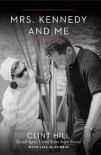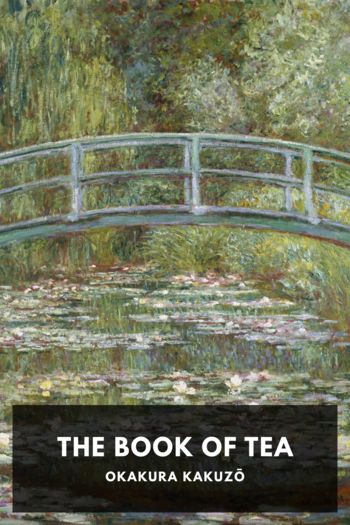Mrs. Kennedy and Me: An Intimate Memoir Clint Hil (read with me .TXT) 📖

- Author: Clint Hil
Book online «Mrs. Kennedy and Me: An Intimate Memoir Clint Hil (read with me .TXT) 📖». Author Clint Hil
The rooms at the Red Fox Inn ran fourteen dollars per night, which was way too expensive for the Secret Service agents, so we commuted. Every day Mrs. Kennedy was in Middleburg, I drove back and forth on U.S. Route 50 between my home in Arlington and Glen Ora. The fifty-mile drive simply added to the length of my workday. Up bright and early for the one-hour drive. Home late—well after dinnertime—tired and hungry. The lightly graveled dirt roads became a quagmire of mud and slush, freezing as hard as stone at night, and during the daytime, sloppy and soft, as the sun melted the snow, leaving huge puddles of water in every low spot in the terrain. Helicopter was the preferred means of transportation, but only the president, first family, and high-ranking government officials or official guests qualified. Those of us who drove just did the best we could not to get stuck. Because I was the second man on the detail I worked weekends, while Jeffries took Saturdays and Sundays off. This meant that I spent a lot of time in Middleburg, along with the children’s agents, Bob Foster and Lynn Meredith.
Both Bob Foster and Lynn Meredith were great guys—and the three of us got along famously. We were all three about the same age, married, and had young children. Foster was a proud and staunchly loyal Ohio State graduate who had a wonderful sense of humor. Lynn Meredith was an accomplished pianist who had an endless repertoire of upbeat songs that ranged from ragtime to jazz to anything modern. Anytime there was a piano around, he would sit down and have everybody singing in no time. John was still an infant at this time, but Caroline adored both Mr. Meredith and Mr. Foster.
All the reporters knew who I was by this time, and that I was assigned to Mrs. Kennedy, so whenever I went into the little town of Middleburg, word would get around and suddenly I’d be surrounded: “Clint, where is Mrs. Kennedy?” “Does she have any plans to leave the estate?” “What on earth does she do all day?”
I tried to be as friendly and respectful as I could without providing any of the information they were seeking. In fact, Mrs. Kennedy was usually doing what she loved—spending time with her children and riding, and always trying to keep out of the public eye.
When I had done my research on Mrs. Kennedy I learned that she was an accomplished horseback rider. She had ridden in competitions since early childhood, and now that she had rented this place in the Virginia hunt country, it was clear that she planned to ride more frequently for sport and relaxation. This was a bit of a problem for the Secret Service because we were responsible for protecting her—and nobody on the White House Detail was as skilled a rider as the first lady.
She boarded her horse, a bay gelding named Bit of Irish, at the nearby farm of her good friends Eve and Paul Fout. The Fouts would bring the horse by trailer to Glen Ora so she could ride him as she pleased when she was in residence there. The Fouts were also members of the Orange County Hunt Club, which had extended an invitation for Mrs. Kennedy to join.
When I first heard her talk about “riding the hunt” I envisioned a group of friends trotting on their horses across the rolling hills of the fenced estates, stopping for tea and crumpets after an hour or so. There was talk at Secret Service headquarters of sending me and a couple of other agents to riding school so that we could adequately protect Mrs. Kennedy on these outings. It soon became clear, however, that that was not a feasible option.
Fox hunting in Virginia, it turned out, was a serious sport. It was well organized, highly structured, and very expensive. The participants were all excellent riders, seriously chasing an elusive fox across the countryside, jumping over hedges and fences, surrounded by a pack of well-trained foxhounds that barked and yelped all along the way, making a tremendous racket. I had never seen or heard anything like it.
The hunt clubs were organized like a well-run business, with the master of the hunt at the top of the organizational chart. The master of the hunt organized the sporting activities of the club, maintained the kennels for the dogs—always referred to as “hounds”—and was responsible for accounting for the money raised by the club. Next came the kennelman, who looked after the hounds and helped with the kennel, and the huntsman, who was responsible for directing the hounds. Assisting the huntsman were the whippers-in. These riders carried long whips and had the job of keeping the pack together to prevent straying or “rioting”—the term used when the foxhounds chased something other than the fox. Finally, there were the followers, who rode at the back of the group.
Special attention was paid to the type of equipment one used, and proper attire was mandatory. The official hunt season in Virginia is between October and March, and during this time the huntsman, masters, former masters, and whippers-in wear scarlet-colored coats. They are sometime called pinks. The rest of the riders wear black or dark blue jackets, with the ladies’ jackets distinguished by colored collars. Tight-fitting britches and knee-high leather boots are worn to prevent getting caught up in the branches; brown or black leather gloves are worn to protect the hands; a helmet to protect the head; and a tie, which can double as a bandage in case of injury. During the off season, “rat





Comments (0)